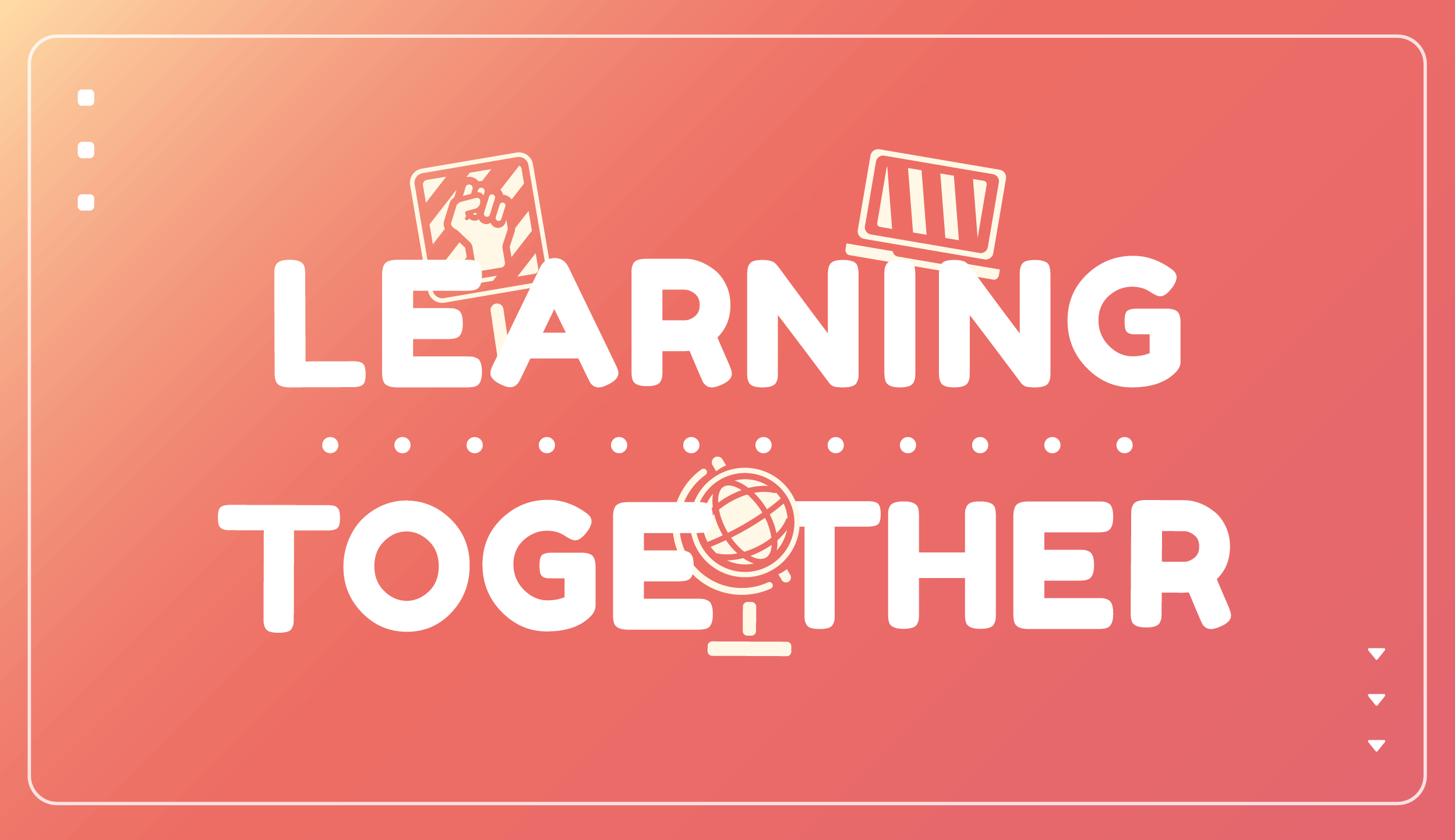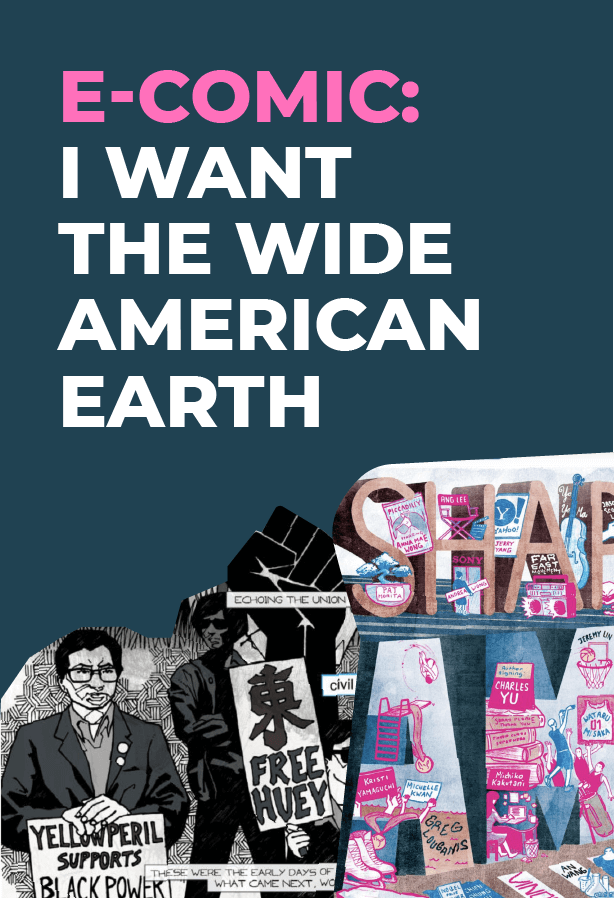

Learning Together Through Challenging Times
The Center for the Study of Hate Extremism reported a 164% increase in hate crimes and incidents against Asian American and Pacific Islander (AAPI) communities in the first part of 2021 when compared to the first quarter of 2020. In a May 2021 report issued by Stop AAPI Hate, gender, language and religion were cited as motivating factors in 21.7% of hate incidents leveled against Asian American people. Hate incidents reported by women made up 64.8% of reports.
Why is this current crisis important for educators and learners?
The rising numbers of hate crimes and incidents against Asian Americans is negatively impacting people in school communities. In the report linked below by Stop AAPI Hate and the National Asian Pacific American Women’s Forum, AAPI women, girls, and non-binary people are especially targeted during this time. We encourage you to read through the report, which provides stories about their experience as targets of hate and racism, as well as disaggregated data sets about who is being impacted. As stated in the report, “accurate and disaggregated data collection is needed to identify key disparities within the AAPI community and allocate resources to those most in need.” If you are interested in learning more about why disaggregated data sets are important to analyze when discussing AAPI communities, please visit our We Are Not A Stereotype video series to hear from several Asian American educators who explain why aggregated data furthers harmful stereotypes and leads to critical resource barriers.
New resources and opportunities to further understand and talk about these challenging times—especially before a new school year.
The Smithsonian Asian Pacific American Center has new resources available for you to connect with and learn from Asian American educators who have created materials you can use in the classroom, and workshop opportunities for educators to practice teaching Asian American stories. Explore the links below to read new interviews, explore new resources, and sign up for a workshop about how to address anti-Asian stereotypes in the classroom.


Connecting Our Present to Our Past: Histories of Violence Against Asian and Asian American Women
In this new interview, you will meet Sung Sohn (she/her), the Executive Director of the Education for Social Justice Foundation, and Jenny Chan, Director of Pacific Atrocities Education. Their work focuses on violence facing women in South Korea, China, and the Philippines during World War II and in diasporic communities in the United States.
Before you open their interview, we want to acknowledge that this story includes information about sexual violence and abuse of women. We also acknowledge that this content may be disturbing, and we encourage you to care for your well-being before you continue reading the interview.


Educators Making a Difference: Centering Anti-Racism, Lived Experiences, and Joy
In this interview, you will meet Virginia Nguyen (she/her) and Stacy Yung (she/her), history teachers committed social justice, equity, and antiracism. Through their organization Educate to Empower, they facilitate Diversity, Equity and Inclusion and antiracism workshops, and build curriculum about Asian American and Pacific Islander (AAPI) histories. They host workshops, share lesson plans, create resources to empower educators, and more.
For this Learning Together feature, the Smithsonian Asian Pacific American Center (APAC) wanted to learn more about their #StopAAPIHAte workshops, which APAC will be hosting with them on August 11 and 18, 2021. Read their interview by clicking on the link below and sign up for your spot at one of their workshops!
Kindness Heals
What message of hope do you want to share with others?
From the xenophobia towards Asians and Asian Americans caused by COVID-19, the disproportionate number of COVID-19 cases affecting Black, Indigenous and People of Color (BIPOC) communities, and to the national uprisings surrounding the Black Lives Matter movement, the times we are living in have brought attention to longstanding injustices and how we can hope to change for the better. We can become stronger together as we embrace the lesson that #KindnessHeals.

Connecting you to Asian American and Pacific Islander voices and stories.
The Smithsonian Asian Pacific American Center’s Learning Together page launched in 2019 to connect the Smithsonian Asian Pacific American Center’s programs, curatorial expertise, and community anniversaries with K12 educators across the country. This page serves as an online venue for educational content featuring interviews with Asian American and Pacific Islander (AAPI) community members, links to community-created educational resources, book recommendations, discussion ideas, and more.
In this page you will find resources in the following categories:
• Addressing anti-Asian racism and xenophobia
• Activities and videos for students, families, and lifelong learners
• Content complementing Social Studies units
• Resources about Asian American and Pacific Islander voices in literature
These grids will expand with new content and activities throughout the year. We hope you will continue to visit this page!
 Continue scrolling down to view content and resources that can be modified for Social Studies and English Language Arts lessons, and activities suitable for all ages.
Continue scrolling down to view content and resources that can be modified for Social Studies and English Language Arts lessons, and activities suitable for all ages.
Resources Addressing Anti-Asian Racism and Xenophobia
Click on any title to visit the page
A Learning Together feature with anti-bias educator and consultant Liz Kleinrock. This resource includes:
- Tips for educators on how to talk about racism
- Liz’s TED Talk, “How to teach kids to talk about taboo topics”
A three-part activity for youth, 13-18 years old, reflecting on 2020 and looking toward 2021. This includes three activities that can be done at home:
- Decorating a face mask
- Writing a letter about the future
- Identifying a support network
Smithsonian APA’s response to the dual pandemics of 2020, COVID-19 and racism.
- Links to resources about the history of anti-Asian racism in the United States
- Links to resources about Asian American and Pacific Islander history and heritage
Read an interview with the Immigrant History Initiative’s founders and restorative justice educator Sarah Appelbaum on restorative justice as a tool for addressing anti-Asian racism. You can also download the Initiative’s Restorative Justice Dialogue resource, a guide to addressing anti-Asian racism with students.
Activities and Videos and for Students, Families and Lifelong Learners
Click on any title to visit the page
A web series engaging Asian American heritage “in real life,” in progress, across a range of media and communities. Includes:
- Poetry readings
- Zine workshop
- Readings by authors
- Musical performance
An arts education module series introducing new art-making ideas created by educators and AAPI artists. Includes:
- 4 art-making ideas, each with a Learning Lab collection, a downloadable PDF, recorded webinars, and video tutorials
- Links to artist webpages
An online exhibition curated with love by the Smithsonian APA Center. This resource includes:
- Short films
- Poems & music
- Audio and video meditations
An activity book featuring coloring sheets, writing prompts, discussion starters & more. Created by artists, scholars & activists. Available as a free downloadable PDF and includes 5 ready-to-print activities about action, empathy, ability, wellness and beauty.
A 7-minute short film profile of queer elder Lenore Chinn on queer artmaking and organizing in the Bay Area. Includes links to resources about LGBTQIA terminologies.
An online exhibition of video poems featuring 12 queer Asian and Pacific Islander diasporic poets. Includes 12 video poems and links to resources about LGBTQIA terminologies.
A short video and postcard series pairing images of film icon Anna May Wong with poetry by Sally Wen Mao. This resource includes:
- One 4-minute film
- Four downloadable postcards
- Make Your Own Postcard activity
An online exhibition and tribute featuring a series of reflections from fourteen artists on the life and legacy of Yuri Kochiyama. This resource includes:
- Nine images
- Two short videos
- Two audio tracks
- Accompanying short reflections from artists
Content to Complement Social Studies Units
Hover over title to see details, click to visit
This page includes:
- 40-60 minute talks on video
- Links to Learning Lab collections
- Q+A sessions with some speakers about why the topics in discussion are important for inclusion in classroom settings and teaching practices.
This page includes:
- Documentary series, “Language of a Nation”
- Podcast made by students in Grades 1-3 about a Native Hawaiian tradition
- General information about the initiative
This page includes:
- Worksheets for students
- Tips on how to teach the activities in classrooms
- Links to digital resources that expand on Japanese American World War II history
This page includes:
- Brief biographies and historical images
- Video interview with a scholar
- Learning Lab collection
- Links to articles about the overthrow
This page includes:
- Interviews with two scholars and experts on Filipino American history
- Links to community archives
- Links to book recommendations
This page includes:
- Interviews with two poets and educators
- Links to original poems
- Link to archive about history of Guåhan/Guam
- Book recommendations
- Short animated film
Resources about Asian American and Pacific Islander Voices in Literature
Click on any title to visit the page
A Learning Together feature for teachers about the importance of selecting diverse books for the classroom. This page includes:
- Interviews with two scholars
- Links to book titles and resources about the importance of representation in literature
Website featuring book titles for all ages. This page includes:
- Book reviews
- Author interviews
Resources Addressing Anti-Asian Racism and Xenophobia
Click on any title to visit the page
A Learning Together feature with anti-bias educator and consultant Liz Kleinrock. This resource includes:
- Tips for educators on how to talk about racism
- Liz’s TED Talk, “How to teach kids to talk about taboo topics”
A three-part activity for youth, 13-18 years old, reflecting on 2020 and looking toward 2021. This includes three activities that can be done at home:
- Decorating a face mask
- Writing a letter about the future
- Identifying a support network
Smithsonian APA’s response to the dual pandemics of 2020, COVID-19 and racism.
- Links to resources about the history of anti-Asian racism in the United States
- Links to resources about Asian American and Pacific Islander history and heritage
Download the Immigrant History Initiative’s Restorative Justice Dialogue resource, a guide to address anti-Asian racism with students.
- Links to the Initiative’s restorative dialogue resource and other educational materials
- Interview with the Initiative’s founders and restorative justice educator Sarah Appelbaum
Activities and Videos and for Students, Families and Lifelong Learners
Click on any title to visit the page
A web series engaging Asian American heritage “in real life,” in progress, across a range of media and communities. Includes:
- Poetry readings
- Zine workshop
- Readings by authors
- Musical performance
An arts education module series introducing new art-making ideas created by educators and AAPI artists. Includes:
- 4 art-making ideas, each with a Learning Lab collection, a downloadable PDF, recorded webinars, and video tutorials
- Links to artist webpages
An online exhibition curated with love by the Smithsonian APA Center. This resource includes:
- Short films
- Poems & music
- Audio and video meditations
An activity book featuring coloring sheets, writing prompts, discussion starters & more. Created by artists, scholars & activists. Available as a free downloadable PDF and includes 5 ready-to-print activities about action, empathy, ability, wellness and beauty.
A 7-minute short film profile of queer elder Lenore Chinn on queer artmaking and organizing in the Bay Area. Includes links to resources about LGBTQIA terminologies.
An online exhibition of video poems featuring 12 queer Asian and Pacific Islander diasporic poets. Includes 12 video poems and links to resources about LGBTQIA terminologies.
A short video and postcard series pairing images of film icon Anna May Wong with poetry by Sally Wen Mao. This resource includes:
- One 4-minute film
- Four downloadable postcards
- Make Your Own Postcard activity
An online exhibition and tribute featuring a series of reflections from fourteen artists on the life and legacy of Yuri Kochiyama. This resource includes:
- Nine images
- Two short videos
- Two audio tracks
- Accompanying short reflections from artists
Content to Complement Social Studies Units
Click on any title to visit the page
An educational video series for educators, by educators. This series includes 40-60 minute talks breaking down various topics in Asian Pacific American histories that question and challenge what it means to be accepted as American. The content is for educators as they plan history, social studies and civics lessons. The videos can be shared with students in Grades 6-8, 9-12, and in higher education classrooms. This page includes:
- 40-60 minute talks on video
- Links to Learning Lab collections
- Q+A sessions with some speakers about why the topics in discussion are important for inclusion in classroom settings and teaching practices.
A portal about the Our Stories Digital Storytelling Initiative that supports the dissemination and perpetuation of Native Hawaiian and Pacific Island cultures through the media arts. The content in this portal can be used to modify units about Hawaiian Kingdom history, US history, and Media Arts activities for Grades 3-5, 6-8 and 9-12. This page includes:
- Documentary series, “Language of a Nation”
- Podcast made by students in Grades 1-3 about a Native Hawaiian tradition
- General information about the initiative
In partnership with the National Veterans Network, elementary and middle school activities about the Nisei veteran experience during World War II. Both resources include activities for students about everyday life in America’s concentration camps. These activities can be used in units about US history, Civics, World War II history, and activities meant to build empathy, for Grades 2-5, 6-8. This page includes:
- Worksheets for students
- Tips on how to teach the activities in classrooms
- Links to digital resources that expand on Japanese American World War II history
A Learning Together feature about Queen Kapi‘olani, Queen Lili‘uokalani, and the overthrow of the Hawaiian Kingdom. This content can be modified to fit units about Hawaiian Kingdom history, US history and Activism, for Grades 3-5, 6-8 and 9-12. This page includes:
- Brief biographies and historical images
- Video interview with a scholar
- Learning Lab collection
- Links to articles about the overthrow
A Learning Together feature about the Little Syria neighborhood in New York City from 1880-1940, and immigration from Greater Syria to the US. This content can be modified to fit units about US history, Immigration and Migration and Ellis Island for Grades 3-5, 6-8 and 9-12. This page includes:
- Artist interview
- Music video
- Links to archives and museums focused on Arab American histories
- Close-look activity
A Learning Together feature about the legacy of the transcontinental railroad and labor of Chinese immigrants. This content can be modified to fit units about US history, Immigration and Migration and the Chinese Exclusion Act, for Grades 3-5, 6-8 and 9-12. This page includes:
- Interview with a scholar and educator
- Learning Lab collection
- Activity using an object from the Smithsonian collection
A Learning Together feature about the importance of Filipino American history as a vital part of understanding American history. This content can be modified to fit units about US history, Spanish-American War, Philippine-American War, Immigration and Migration, Activism and Labor Movements, for Grades 3-5, 6-8, and 9-12. This page includes:
- Interviews with two scholars and experts on Filipino American history
- Links to community archives
- Links to book recommendations
A Learning Together feature reflecting on the 45th anniversary of the Fall of Saigon through the intersections of war, migration and the environment. This content can be modified to fit units about US history, Vietnam War, Southeast Asian History, Pacific Islands History and Military Expansion in the Pacific, for Grades 9-12. This page includes:
- Interviews with two poets and educators
- Links to original poems
- Link to archive about history of Guåhan/Guam
- Book recommendations
- Short animated film
Resources about Asian American and Pacific Islander Voices in Literature
Click on any title to visit the page
A Learning Together feature for teachers about the importance of selecting diverse books for the classroom. This page includes:
- Interviews with two scholars
- Links to book titles and resources about the importance of representation in literature
Website featuring book titles for all ages. This page includes:
- Book reviews
- Author interviews
A graphic diary of the early pandemic by artist Nguyên Khôi Nguyễn. This resource includes a viewable sketchbook diary.
A series of mini comics from nine artists adapting exhibition texts from I Want the Wide American Earth. This resource includes a 15-page viewable e-comic.































